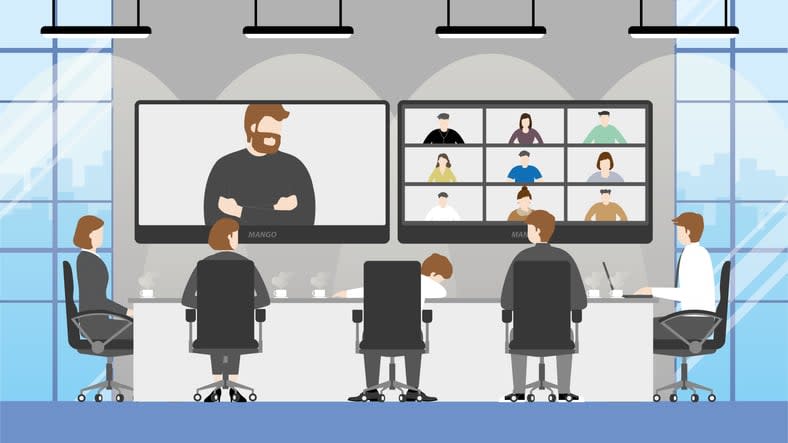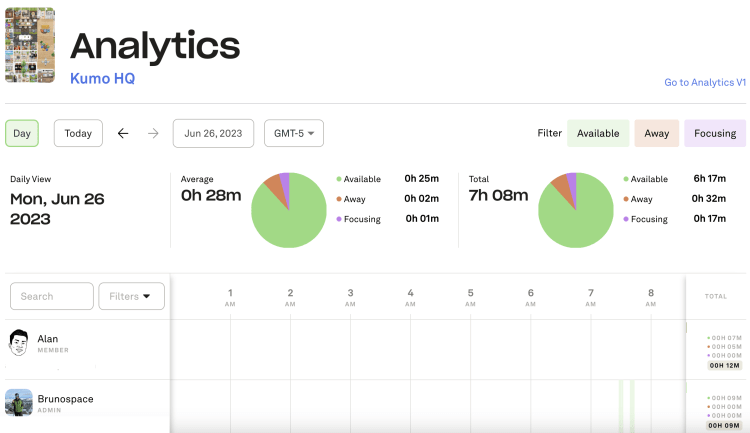Effective onboarding teams are integral to your remote workforce’s success. Starting from understanding team dynamics to selecting the right tools and designing an empowering onboarding program, this guide covers the essentials you need to know. Without inundating you with jargon, we’ll step through each stage, providing practical advice to help your new hires transition smoothly into your remote team.
Key takeaways
- Comprehensive remote onboarding encompasses technology integration, structured programs tailored to each new hire, and strategies for incorporation into the existing team to ease the transition and enhance early productivity.
- Successful company culture in a remote setting is achieved by clearly communicating the company’s vision and values, leveraging technology for virtual team-building activities, and keeping employees continuously engaged in the company’s culture.
- Effective communication for remote teams is established through setting up efficient channels, conveying norms and expectations with clarity, and fostering a culture conducive to open dialogue, leveraging platforms such as Kumospace, Slack, Microsoft, and Teams.
The essentials of onboarding remote teams

A successful onboarding process is rooted in a deep understanding of remote team dynamics. The virtual workspace presents unique challenges when it comes to building relationships and fostering a sense of belonging among new hires. An effective remote employee onboarding process requires recognition of these complexities and implementation of strategies to address them.
In the absence of physical interaction, the integration of new team members is a critical aspect of the onboarding process. This is where the role of technology comes to the forefront. The use of interactive platforms like Kumospace can significantly enhance the onboarding experience, making it more engaging and effective for new hires.
The success of new hires relies significantly on the structure of the remote onboarding program. A well-structured program, while simple, should comprehensively cover all essential elements such as organizational, technical, and social dimensions. The program should be tailored to the individual needs and expectations of each new hire, making sure they feel welcomed and part of the team from day one.
In a virtual setting, integrating new hires into the existing team should also be a focus of a comprehensive onboarding program. Some strategies to consider include:
- Assigning a mentor or an onboarding buddy to provide support to the new hires
- Reinforcing their significance within the team
- Aligning with the productivity metrics observed in organizations that prioritize integration
These strategies can help ensure a smooth transition and successful integration of new hires into the team.
Understanding remote team dynamics
Unique challenges presented by the dynamics of remote teams need addressing during the onboarding process. The absence of face-to-face interactions and nonverbal cues for trust-building necessitates a communication-driven culture. This requires a more deliberate approach to ensure that employees feel welcomed and understand their roles and responsibilities effectively in the remote environment.
Kumospace, with its interactive virtual environments, significantly enhances the virtual onboarding experience by simulating real-world office dynamics. Its platform allows for more organic, face-to-face interactions through video chat, making it easier for new hires to engage with their team and build trust. Additionally, Kumospace's intuitive layout and collaborative tools facilitate a clear understanding of roles and responsibilities, ensuring that employees feel connected and well-integrated into the remote team from the start.
With the advantage of flexible schedules, remote team members can foster creativity and positivity, enhancing productivity.
Key tools for remote onboarding success
Specific technologies can greatly enhance the onboarding experience. Platforms like Kumospace provide an interactive and engaging platform tailored for new hires during the remote onboarding process. It facilitates connecting with team members, setting up technology, compiling resources, and maintaining a smoothly running virtual office space, all of which are essential for effectively acclimating and integrating new employees.
In addition to such platforms, tools like:
These platforms can cater to a range of remote onboarding needs, including communication, document management, training, and performance tracking.
Structuring your remote onboarding program
Successful integration of new hires hinges on a well-structured remote onboarding program. Such a program should include:
- Preboarding activities
- Welcome messages and packages
- Orientation and paperwork
- Clear communication channels
- Social integration
- Training and development
- Ongoing support and feedback
- Evaluation and improvement
Companies like GitLab utilize a handbook-first approach where the company’s handbook serves as the primary source of accurate information that all team members can rely on for insights about the organization. It ensures that the new hires are well-equipped to handle their roles and responsibilities from day one.
Cultivating company culture in a remote setting

Creating an employee-resonating company culture is vital during the onboarding process. For remote teams, conveying this culture can be a challenge, but it is essential to ensure that the company’s values are communicated effectively during the onboarding period.
Cultivating a company culture in a remote setting goes beyond just communicating the company’s vision and values. It requires creating opportunities for new hires to engage with the team and the organization as a whole. With Kumospace, this could be achieved by incorporating engaging activities such as:
- playing virtual games
- organizing virtual lunches
- sending care packages with company swag
- scheduling informal meet-and-greets
These activities foster connections during remote onboarding and promote a sense of camaraderie and belonging among new hires.
Another key aspect of cultivating company culture in a remote setting is continuous cultural involvement. It can be fostered through collaborative learning and cross-training, establishing regular team connection schedules, and integrating engaging networking and interaction components. All these initiatives contribute to creating an enjoyable and stimulating work environment in a fully remote culture.
Leveraging technology like Kumospace can significantly enhance these efforts. With its interactive and engaging platform, Kumospace can:
- Facilitate the sharing of the company’s vision and values
- Help organize virtual team-building activities
- Support continuous cultural engagement among remote employees.
Sharing the vision and values
A critical step in cultivating company culture is sharing the company’s vision and values with remote teams. By utilizing clear and consistent messages, involving the team in the process, modeling the vision and values, and recognizing and rewarding behaviors that align with them, remote employees can foster a strong connection with the company’s goals.
This connection motivates them to contribute meaningfully, thereby playing a significant role in the overall success of the organization.
Virtual team building activities
Strengthening relationships and fostering collaboration among remote employees requires crucial virtual team-building activities. Some examples of virtual team-building activities in Kumospace include:
- Virtual scavenger hunts
- Wellness sessions
- Icebreaker questions
- Virtual escape rooms
These activities can enhance work relationships and foster a sense of community in a remote world setting.
Platforms like Kumospace can greatly enhance these activities by providing:
- A curated list of games and activities
- Enabling multiplayer games that can be played directly in a web browser
- Offering versatile spaces specifically designed for team-building activities and games.
Continuous cultural engagement
Continuous cultural involvement significantly fosters a positive work culture and promotes ongoing learning and development. It also nurtures teamwork and trust, enhances employee engagement and morale, and boosts performance and attendance. To maintain this cultural involvement, consider the following strategies:
- Regular updates and transparency about the company’s operations, achievements, and future plans
- Fostering social interaction and creating opportunities for employees to connect
- Demonstrating care for employees and showing appreciation for their contributions
- Soliciting and listening to feedback from employees
- Promoting health and wellness initiatives
- Organizing virtual meetings and casual hangouts to foster a sense of community
- Randomly interact with colleagues in Kumospace’s virtual office
By implementing these strategies, you can ensure that employees feel valued and appreciated, leading to a more positive and productive work environment.
Streamlining communication for new remote hires

Communication, which is the lifeblood of any organization, takes on even greater importance for remote teams. In the onboarding process, establishing effective communication channels, conveying expectations and norms clearly, and fostering open dialogue can make a significant difference.
The foundation of effective communication lies in the right tools. Platforms like Kumospace, Slack, and Microsoft Teams offer instant messaging tools for real-time communication and collaboration. These platforms play a crucial role in helping teams maintain connectivity, streamline information sharing, and effectively manage workloads and deadlines in a remote work setting.
Another crucial aspect of streamlining communication for new remote hires is the clear communication of expectations and norms. Here are some strategies to achieve this:
- Define clear communication channels
- Set goals and objectives
- Establish clear targets
- Provide regular feedback and recognition
By implementing these strategies, new hires can understand what is expected of them and how they can contribute to the team’s success. This will also boost their confidence and motivation.
Promoting a collaborative and supportive work environment involves:
- Encouraging open dialogue among remote employees
- Taking into consideration individual communication preferences
- Promoting two-way communication
- Implementing strategies focused on maintaining strong communication and team-building among remote workers
- Fostering a culture of openness and trust
Setting up effective channels
A vital first step in streamlining communication for new remote hires is setting up effective communication channels. Some tools that offer a wide range of functionalities, including instant messaging, file sharing, and video conferencing, to address the diverse communication requirements of remote teams are:
- Kumospace
- Google Meet
- ProofHub
- Process Street
- Slack
- Lucidchart
- Zoom
- LastPass
- Zapier
- Microsoft Teams
- GoToMeeting
These tools ensure that all team members, including other team members who might be working remotely or in different departments, are well-connected and have access to the information they need to perform their roles effectively as a team member.
Communicating expectations and norms
For new hires to comprehend their responsibilities and the company’s communication culture, clear communication of expectations and norms for remote work is vital. By establishing clear guidelines, utilizing common communication platforms, encouraging video conferencing, nurturing trust and transparency, and facilitating opportunities for social interaction, organizations can effectively mitigate the typical communication challenges encountered by remote teams.
This fosters a sense of inclusion and value among team members, which is key to enhancing productivity and fostering a positive workplace culture.
Encouraging open dialogue
To foster a collaborative and supportive work environment, encouraging open dialogue among remote employees is key. Open dialogue enhances workplace satisfaction, nurtures trust, and facilitates transparent communication. This can be achieved by establishing an environment that promotes mutual comprehension, respect, transparency, and responsibility, ultimately leading to improved teamwork and resolution of challenges.
Technology plays a significant role in facilitating this open dialogue. Platforms like Kumospace offer a platform for employees to engage in ways that promote open and transparent communication.
Integrating new hires into remote workflows

A crucial step in onboarding remote employees is their integration into remote workflows. Familiarizing new hires with company processes, simulating the remote work environment, and providing role-specific training can significantly enhance their productivity and engagement.
For a new remote employee’s productivity, understanding the company’s processes is key as it helps reduce business expense waste, identify current productivity levels, and foster a better workplace environment. Tools like Kumospace can facilitate this understanding by providing an interactive platform for new hires to acquaint themselves with the company’s culture, policies, and establish connections with their colleagues.
By simulating the remote work environment, new hires get the opportunity to immerse themselves in the virtual office experience and interact with their colleagues. Tools like Kumospace can significantly enhance this simulation by providing an environment that closely mimics the in-person experience.
To ensure remote employees excel in their positions, providing role-specific training is essential. Here are some effective ways of delivering role-specific training:
- Conducting virtual training classes
- Online courses
- Podcasts
- Webinars
- Utilizing other eLearning methods
It is also important to assess training effectiveness through post-training surveys to gather valuable feedback.
Familiarization with company processes
Acquainting new hires with company processes is a crucial step in integrating them into remote workflows. This involves providing them with comprehensive information about the company, including its:
- Policies
- Values
- Mission
- Products/services
Tools like Kumospace can facilitate this process by providing an interactive platform where new hires can engage with their colleagues and learn about the company’s operations.
Regular updates about company operations, achievements, and future plans can also help maintain this familiarity and ensure that new hires are well-equipped to handle their roles.
Simulating the remote work environment
Simulating the remote work environment is an effective way to familiarize new hires with the dynamics of remote work. This involves creating a virtual workspace that replicates the feel of an in-person office and allows new hires to interact with their colleagues and superiors. Tools like Kumospace can enhance this simulation by offering features like virtual meetings, online whiteboards, digital games, and customizable spaces.
By simulating real-world scenarios, new hires can expedite their learning curve and gain insight into the actual responsibilities of the job.
Role-specific training
Providing role-specific training is essential for the integration of new hires into remote workflows. Such training helps new hires understand their roles and responsibilities and equips them with the necessary skills and knowledge to perform their jobs effectively. Post-training surveys can be used to assess training effectiveness and gather valuable feedback.
Empowering remote employees from day one

A crucial step towards ensuring the success and productivity of remote employees is empowering them from day one. This involves providing resources and support, assigning an onboarding buddy, and encouraging early contributions.
Boosting the confidence and readiness of new hires in their new positions necessitates providing resources and support from the onset. Resources include:
- Communication and collaboration systems
- Performance metrics
- Flexibility
- Cloud collaboration
- Team messaging
- Video conferencing
- Project management
- Data storage
- Productivity tools
- Employee resource groups
- Celebrating special events
- Informal interactions
Another effective way to empower new hires is by assigning them an onboarding buddy. An onboarding buddy serves as a supportive point of contact for new employees, providing them with job-related assistance and fostering a feeling of belonging and assistance.
By encouraging early contributions, new hires can showcase their skills, build confidence in their abilities, and feel valued and appreciated. Methods to promote early participation include utilizing technology to stay connected, fostering social interaction, demonstrating care for employees, soliciting and listening to feedback, promoting health and wellness, organizing virtual meetings and casual hangouts, and ensuring employees feel valued and appreciated.
Providing resources and support
Providing resources and support to new hires is a crucial step in empowering them from day one. Some important resources include:
- Communication and collaboration systems
- Performance metrics
- Flexibility
- Cloud collaboration
- Team messaging
- Video conferencing
- Project management
- Data storage
- Productivity tools
- Employee resource groups
- Celebrating special events
- Informal interactions
These resources ensure that remote employees feel confident and prepared in their roles.
Additionally, offering virtual training sessions can aid new employees in familiarizing themselves with these resources and tools.
Assigning an onboarding buddy
Assigning an onboarding buddy to new hires is a great way to provide support, guidance, and aid during the initial weeks of their roles. This role is essential for ensuring that new employees, as well as new team members, feel welcomed, supported, and connected to the company, ultimately enhancing their integration and sense of belonging to the team.
Research indicates that new hires paired with buddies reported a 23% increase in satisfaction with the onboarding process and demonstrated higher productivity, particularly when they had regular interactions with their buddy.
Encouraging early contributions
By encouraging early contributions, new hires can showcase their skills, build confidence in their abilities, and feel valued and appreciated. This can be achieved by demonstrating appreciation and recognition for their work, generating enthusiasm within the organization for their contributions, celebrating their accomplishments, and offering consistent feedback and clear objectives.
Platforms like Kumospace can be utilized to highlight these initial contributions, fostering a sense of value and engagement.
Crafting a remote onboarding checklist
To ensure a smooth and successful onboarding experience, a remote onboarding checklist is a critical tool. It outlines pre-onboarding preparation, first-day agenda, and milestones for the first 90 days, providing new hires with a clear roadmap of what to expect during the onboarding process.
Pre-onboarding preparation entails setting up necessary tools, granting access to resources, and acquainting the new hire with the team. This ensures that new hires have everything they need to hit the ground running on their first day.
An effective first-day agenda sets the tone for a positive onboarding experience, helping new hires feel welcomed and engaged from the start. It includes:
- Finalizing new hire paperwork
- Establishing the first week’s schedule
- Sending welcome communications
- Delivering necessary work equipment
- Arranging virtual introductions
- Granting access to required tools and systems
- Assigning mentors or buddies
- Conducting virtual team-building exercises
- Clarifying expectations and objectives
- Allocating training and resources
- Frequently checking in
- Recognizing milestones and accomplishments
To help new hires track their progress and ensure they receive ongoing support and guidance throughout the onboarding process, establishing milestones for the first 90 days is beneficial. These milestones can be defined in terms of the tasks to be completed, the skills to be acquired, and the performance goals to be achieved.
Pre-onboarding preparation
Pre-onboarding preparation is a crucial step in ensuring a smooth onboarding experience. This involves setting up all the technological necessities for the new employee and ensuring the provision of essential equipment ahead of time. This assists the new hire in familiarizing themselves with the company’s culture, policies, and establish connections with their colleagues.
Additionally, offering virtual training sessions can aid the new employee in familiarizing themselves with these tools.
First-day agenda
A well-planned first-day agenda helps new hires feel welcomed and engaged from the start. This sets the tone for a positive onboarding experience and ensures that new hires are well-equipped to handle their roles from day one.
Milestones for the first 90 days
Establishing milestones for the first 90 days is an effective way to track the progress of new hires and ensure they receive ongoing support and guidance. Here are some key steps to follow:
- Define clear communication channels.
- Set goals and objectives for the new hire.
- Establish clear targets for performance.
By following these steps, you can ensure that new hires understand what is expected of them and how they can contribute to the team’s success.
Regular feedback and recognition can also boost their confidence and motivation.
Leveraging technology, like Kumospace, for interactive onboarding
To engage and inspire new hires, leveraging technology for interactive onboarding proves effective. Platforms like Kumospace provide a virtual office environment that fosters interaction and collaboration, making the onboarding process more engaging and memorable.
Interactive onboarding sessions in Kumospace offer remote employees a more immersive and engaging experience, helping foster a sense of connection and belonging. By incorporating challenges, quizzes, and interactive activities, the onboarding process becomes more engaging and memorable for new hires.
Managers can gather feedback and insights on the onboarding process for continuous improvement and optimization by utilizing analytics. Kumospace provides valuable insights and analytics regarding the duration of employee utilization of the virtual spaces.
Interactive onboarding sessions

Interactive onboarding sessions in Kumospace provide a more immersive and engaging experience for remote employees. By offering functionalities like:
- Conference rooms
- Common areas
- Rooms for focused work
- Broadcast features
Kumospace allows new hires to engage with their colleagues and learn about the company’s operations in a more interactive and enjoyable way.
Gamification of onboarding tasks

Gamifying onboarding tasks can make the process more enjoyable and memorable for new hires. By integrating challenges, quizzes, and interactive activities in Kumospace, the onboarding tasks become engaging and interactive.
This approach not only makes the onboarding process more enjoyable for new hires but also fosters a sense of camaraderie and teamwork among employees.
Utilizing analytics for feedback

Utilizing analytics for feedback can help continuously improve and optimize the onboarding process. With Kumospace’s analytics feature, managers can gather valuable data and insights to help organizations identify areas for improvement and devise targeted strategies.
Through the use of space analytics, organizations can:
- Monitor and evaluate onboarding effectiveness
- Pinpoint potential obstacles or challenges for new hires
- Make informed decisions to elevate the onboarding experience.
Summary
In conclusion, a well-structured and interactive onboarding process is essential for integrating new hires into remote teams. By understanding the dynamics of remote teams, using the right tools, structuring an effective onboarding program, and leveraging technology like Kumospace, organizations can create an immersive and engaging onboarding experience for new hires. This not only helps new hires feel welcomed and integrated but also boosts their productivity and engagement, ultimately contributing to the overall success of the organization.
Frequently asked questions
To onboard a remote employee, start the process early, get them online quickly, use a central platform for company culture and documentation, foster a sense of belonging, and develop an individualized onboarding plan with video check-ins and goals. This holistic approach can help integrate the remote employee effectively without delay.
Yes, onboarding can be effectively done remotely. Despite the challenges, it's possible to make new hires feel welcome and prepared for success in a remote work environment.
The 4-step onboarding process includes preboarding, orientation, training, and transition to a new role and is crucial for engaging new hires and integrating them into the company seamlessly. This process helps in ensuring that new employees feel welcome and prepared for their new role.
To improve remote onboarding with Kumospace, focus on creating engaging and interactive virtual spaces that mirror real office environments, allowing new hires to easily navigate and connect with team members. Utilize Kumospace's diverse range of collaborative tools and features to facilitate clear communication of roles, responsibilities, and company culture, ensuring a smooth and welcoming onboarding experience.
Understanding remote team dynamics in the onboarding process is crucial for catering to the unique needs of remote employees, building relationships, and fostering a sense of belonging among new hires.





